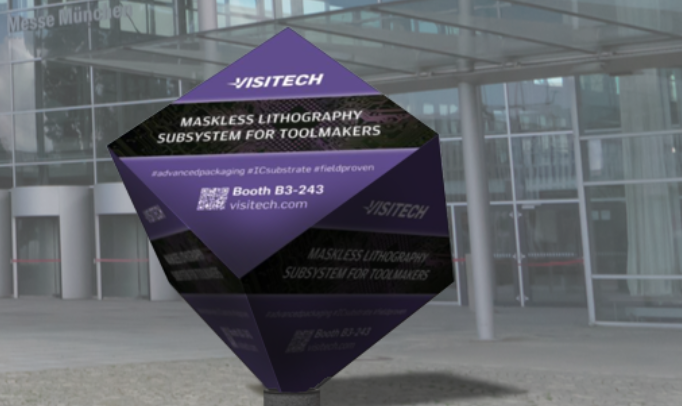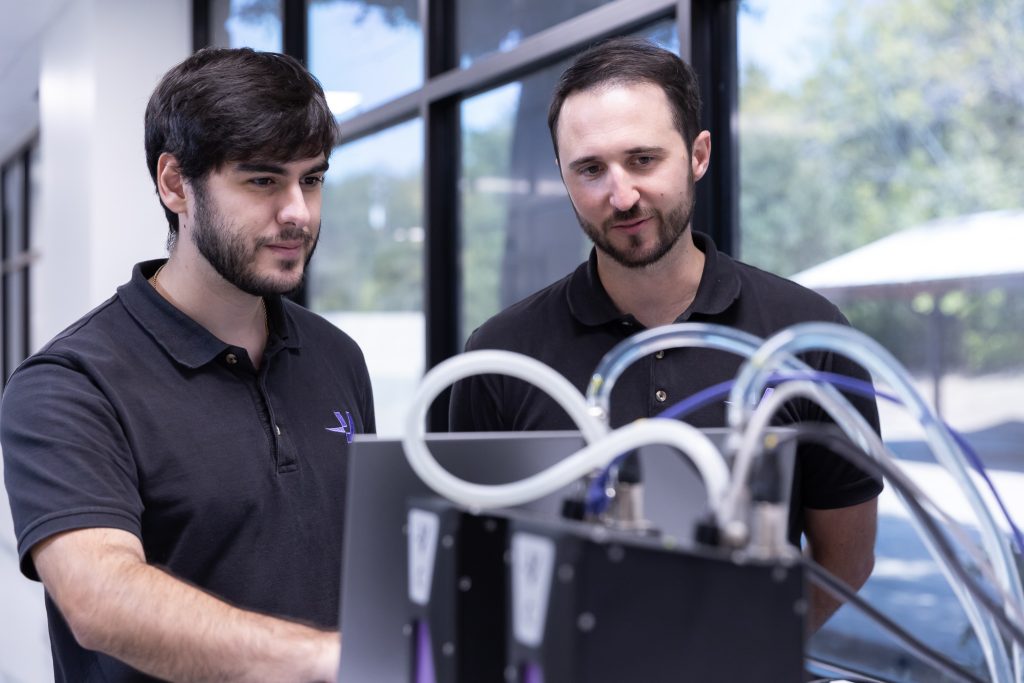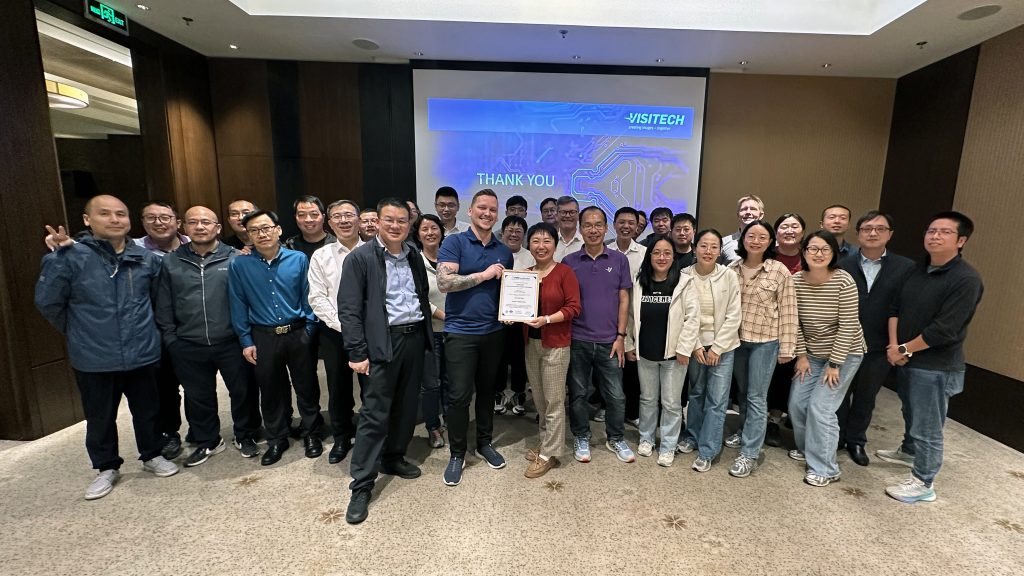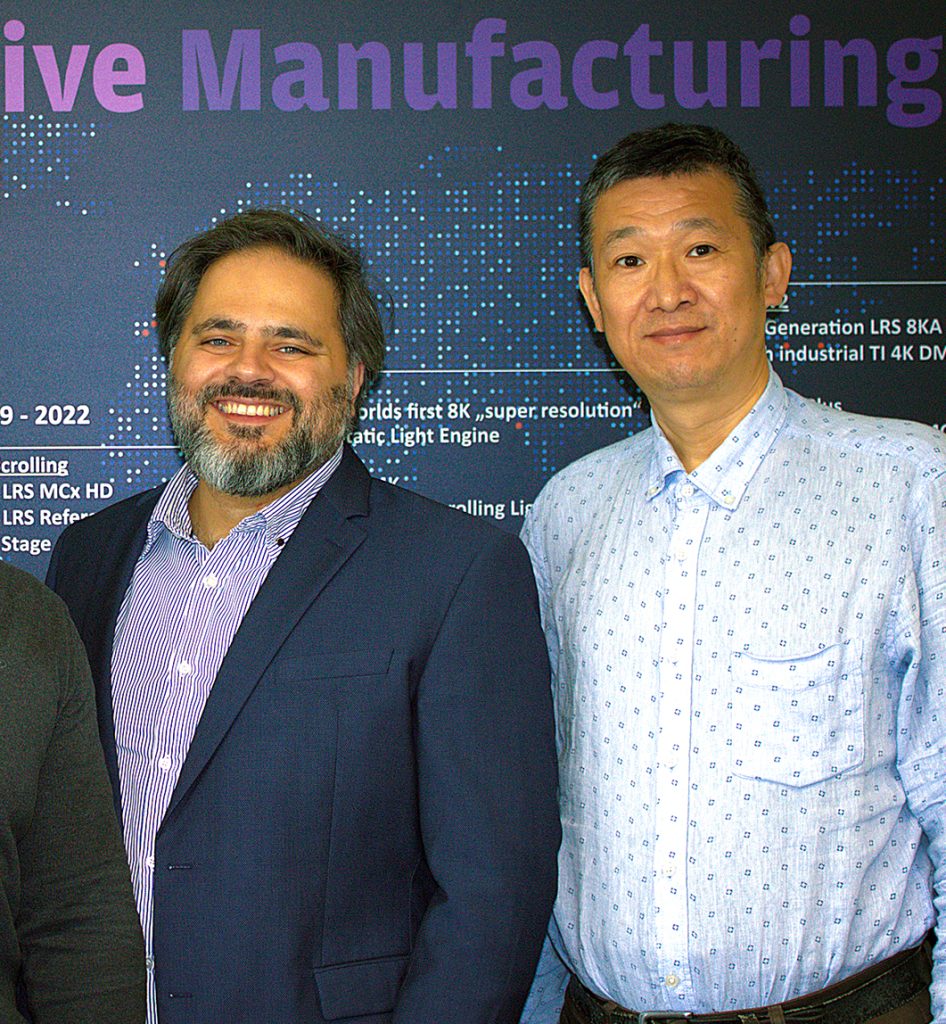
Additive Manufacturing enables the industry to revolutionize the value chain of products: from design to production, distribution, and aftermarket. The key weaknesses compared to traditional polymer production methods have been limitations in volume and size, which largely have been limited to small print beds and limited resolution/range of movement of light sources – the light engines.
However: Visitech’s groundbreaking technology enables the print bed to be virtually any size by allowing the light sources to move across the print bed creating high-definition components on an industrial-scale production level – a powerful tool for AM machine builders.
Visitech has re-thought how an AM machine prints by transferring our experience in PCB and Advanced Packaging manufacturing markets to Additive Manufacturing. Our scrolling LLS-series “photoheads” have enabled the manufacturing of circuit boards where every nanometer counts toward a flawless finished product. This is a technology where Visitech has a 10-year track record of delivering quality products. The key enablers of our dynamic light engines are a combination of our in-house R&D experience of rigid mechanical and optical properties, combined with our patented state-of-the-art software.
Our specialty lies in that we can align the project images in such a way that the resultant polymer will have no visual trace of being generated by two separate light engines. This means that we can put several individual light engines next to one another and generate one image, which blends flawlessly. Combining this with light engines that move – or “scroll” – across the print surface, we enable high-resolution parts across a virtually endless print bed.

The “scrolling” light engines allow parts to be manufactured with high precision (50 μm) with a high output. The output is achieved in two ways:
- The light engines move: A traditional static machine is limited by the resolution of the light source. The higher the resolution needed on the print bed, the smaller the image. Alternatively, the projector needs exceptionally high resolution (cost goes up). The dynamic light engines from Visitech solve the problem by allowing the photoheads to move across the print bed – combining the possibility of having high resolution and a large print bed.
- If an even larger print area than what can be managed with one head alone is needed, the Visitech LRS products can be stacked. Doing so achieves an even more extensive coverage of the print bed in one pass.
Visitech’s light engines are developed to emit either UV light for UV-sensitive resin-type machines, or infrared power source for powder bed fusion (PBF)-type machines that would allow additive manufacturing of engineering polymers such as PEEK, PSU, or other polymers with a high melting point. The light engines can be assembled as part of a Visitech “Motion Stage”, which can be integrated into a larger additive manufacturing machine.
In summary, machine builders get an out-of-the-box light source hardware and software package that enables machine builds for either large item or high-volume part manufacturing. The only remaining limit is the physical space available for the additive manufacturing machine in its workshop.

Below we have created an example of the throughput that can be achieved, where a 30 x 30 x 30 cube is produced by scrolling light engines with different configurations (2, 4, and 8 light engines) compared to a traditional static DLP machine with 2, 4, and 8 static heads. The example also takes into account a “high energy” resin and a “standard” resin.
Increasing the number of photo heads (and the cost of the machine) still maintains a linear cost increase, which remains marginal – as shown in the graph. By utilizing scrolling engines and optimizing the printing conducted in shadow time, the output of a scrolling machine is significantly higher. Where a traditional DLP machine with eight photo heads could produce 14 cubes/hour, a scrolling machine could potentially produce over 1000 units with a 900 mm vat set up. In terms of cost per part, the estimation is that a scrolling setup would be 60-80 times more cost-effective per part, due to optimization of shadow time and curing.
In other words – scrolling light engines are a key enabler for the high-quality, high-volume production of 3D printed components.
Contact us so that we can help you determine the optimal setup for your need, or if you are interested in our dynamic light heads and motion stage solutions.

Share





